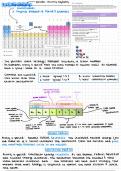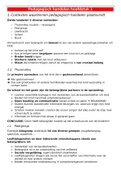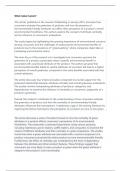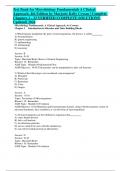Summary
Summary AQA A Level Chemistry 3.2.1 Periodicity
- Module
- Unit 3.2.1 - Periodicity
- Institution
- AQA
This document follows the AQA AS specification for periodicity. Detailed and thorough notes. I talk about classification of elements and the physical properties of period 3 elements. Explanation and description for the patterns in atomic radius, ionisation energies and melting points. Easy and clea...
[Show more]










